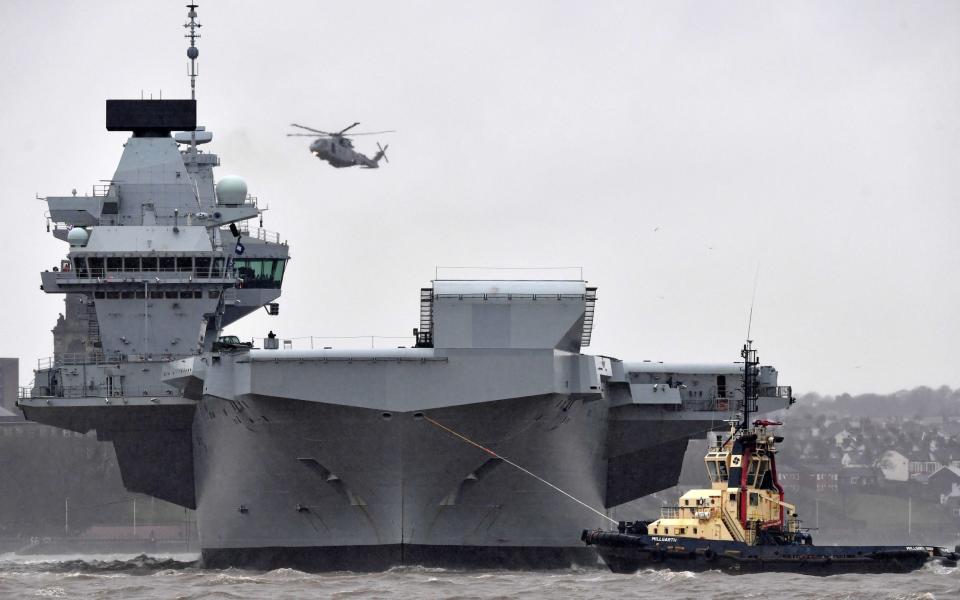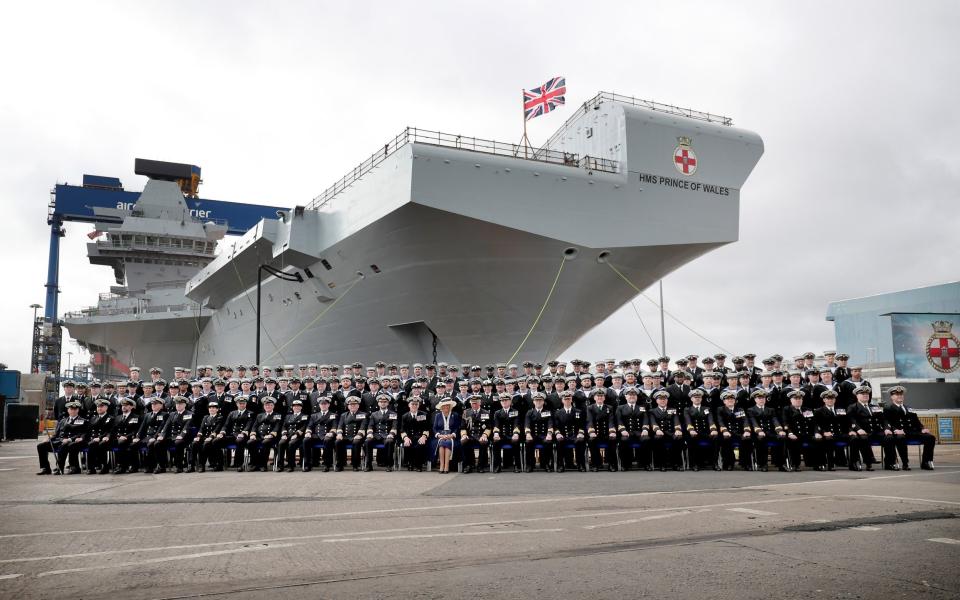Anglo-French row erupts over breakdown of Britain’s £3bn aircraft carrier

When the first Royal Navy F-35 warplane touched down on the deck of the HMS Prince of Wales aircraft carrier two years ago, Defence Secretary Ben Wallace hailed it as a “momentous milestone” for the fleet.
Billions of pounds of investment and years of work to restore a functioning carrier fleet to the British Navy were finally coming together.
Yet the HMS Prince of Wales aircraft carrier, which cost taxpayers £3bn, spent most of last year docked after problems were discovered with the vessel. A long-planned visit to the US was cancelled because of propeller issues, leaving its sister ship the HMS Queen Elizabeth II as Britain's operational carrier.
The consortium of the British and European companies that built the 65,000 tonne HMS Prince of Wales are now nervously awaiting a government report into the problem, amid calls for whoever is to blame to foot the bill for the damage.
“There's going to be quite a large amount of finger pointing,” says one industry insider. “It's a little bit embarrassing, let’s be honest.”
The attention of investigators has turned to Thales, according to reports. The €25bn French electronics giant works across aerospace, defence and transport.
The Paris-based company was one of three main members of the Aircraft Carrier Alliance, the consortium that delivered the ship. According to the now-defunct Aircraft Carrier Alliance website, Thales UK “led the design of the QE Class programme and is currently involved in the Power and Propulsion sub-alliance, which the company leads.”
The Prince of Wales broke down last summer as a result of technical issues centred on the starboard side propeller, prompting specialist divers to inspect the vessel. They discovered that the coupling that connects the propeller and drive shafts failed, reportedly leading to rudder damage.
The Telegraph revealed last week that the ship was further delayed by the alignment of the propeller shafts, a problem that could be related to the original issue that sent it back to the dock. Misalignments can cause the shaft to vibrate beyond its design tolerance, wearing down the bearings and potentially breaking a coupling on the shaft itself.
The cluster of problems around the propeller have led to speculation that Thales could be at fault, given its role in the project.
The company said it was a proud member of the alliance but declined to comment further.
Thales itself is not a shipbuilder, more a systems integrator famous for radars and radios. It was chosen to put together the complex components needed to drive the ship and was the prime contractor responsible for the job, with work subcontracted out.
Experts suggested blame is likely to be shared between a number of companies involved in the design, fitting and perhaps maintenance of the parts in question.
The other members of the Aircraft Carrier Alliance were BAE Systems, Britain's biggest defence firm, and shipbuilder Babcock.
Rolls-Royce was also involved to a lesser extent, supplying the gas turbines that help power the massive vessel. Smaller shipyards around the country assembled sections of the hull, part of a team of more than 30 companies.
Complicating matters further is the fact that the Ministry of Defence itself was part of the Aircraft Carrier Alliance, meaning the taxpayer may also be on the hook for the cost of correcting any faults.
The HMS Prince of Wales passed sea trials before problems were discovered and contractors are hoping this means that whatever went wrong is either nothing to do with them or down to an accident or event that occured after the ship was handed over.

However, the Government report, which according to Navy sources is due “very soon”, is understood to focus on a component on the propeller shaft that may have failed because of design or fitting failures, dashing these hopes.
If it does prove to be a design flaw or construction problem, the companies should be on the hook for the cost of repairing it, says former defence minister and member of commons defence committee Mark Francois.
He said: “It seems clear that if there is an inherent design or construction flaw, it should be down to the Aircraft Carrier Alliance, or their subcontractors, who actually built the ship, to pay to fix it, not the taxpayer. We cannot afford a £3 billion plus aircraft carrier with a limp.”’
The contract covering the building of the carrier is understood to make the contractors jointly liable. Given this, the companies involved are likely to want to get to the bottom of what happened as well
Repairs will be undertaken at Babcock’s shipyard in Rosyth under a maintenance deal with the MoD, although that deal is understood to not cover costs beyond routine maintenance.
Shipbuilding bosses are keen that the problem does not derail the joint venture structure used to build the ships, which helps spread work over a number of shipyards and therefore helps maintain skills should more work come their way.
Industry sources are at a loss as to how the ship passed sea trials and has now developed this problem.
However, the propeller shaft problems are the latest setback to the troubled project. Flooding issues in 2020 meant that the vessel spent less than 90 days at sea in two years and led to £3.3m of repair work.
Last week, MPs questioned Vice Admiral Paul Marshall about problems with the HMS Prince of Wales. He said that the broken starboard shaft should be fixed by the Spring, but revealed that investigators had found “issues” with the port shaft of the vessel as well.
He declined to say whether a build defect or damage at sea was the problem, but allayed MPs’ fears that its sister ship could have the same defect.
“We are confident that [...] it is not a class issue with the carriers,” he said.
A Babcock spokesman said: “One of the most complex maritime engineering programmes in the UK, the Alliance was supported by a supply chain of hundreds of organisations across the country. We remain focused on completing the repair, working with the MOD and other industry partners.”
A Royal Navy spokesman said: “We remain committed to ensuring HMS Prince of Wales commences her operational programme, as planned, in autumn 2023.
“An investigation has been commissioned to establish the cause of the starboard shaft failure on HMS Prince of Wales. This is nearing completion and it would be inappropriate to comment any further at this time.”

 Yahoo Finance
Yahoo Finance 